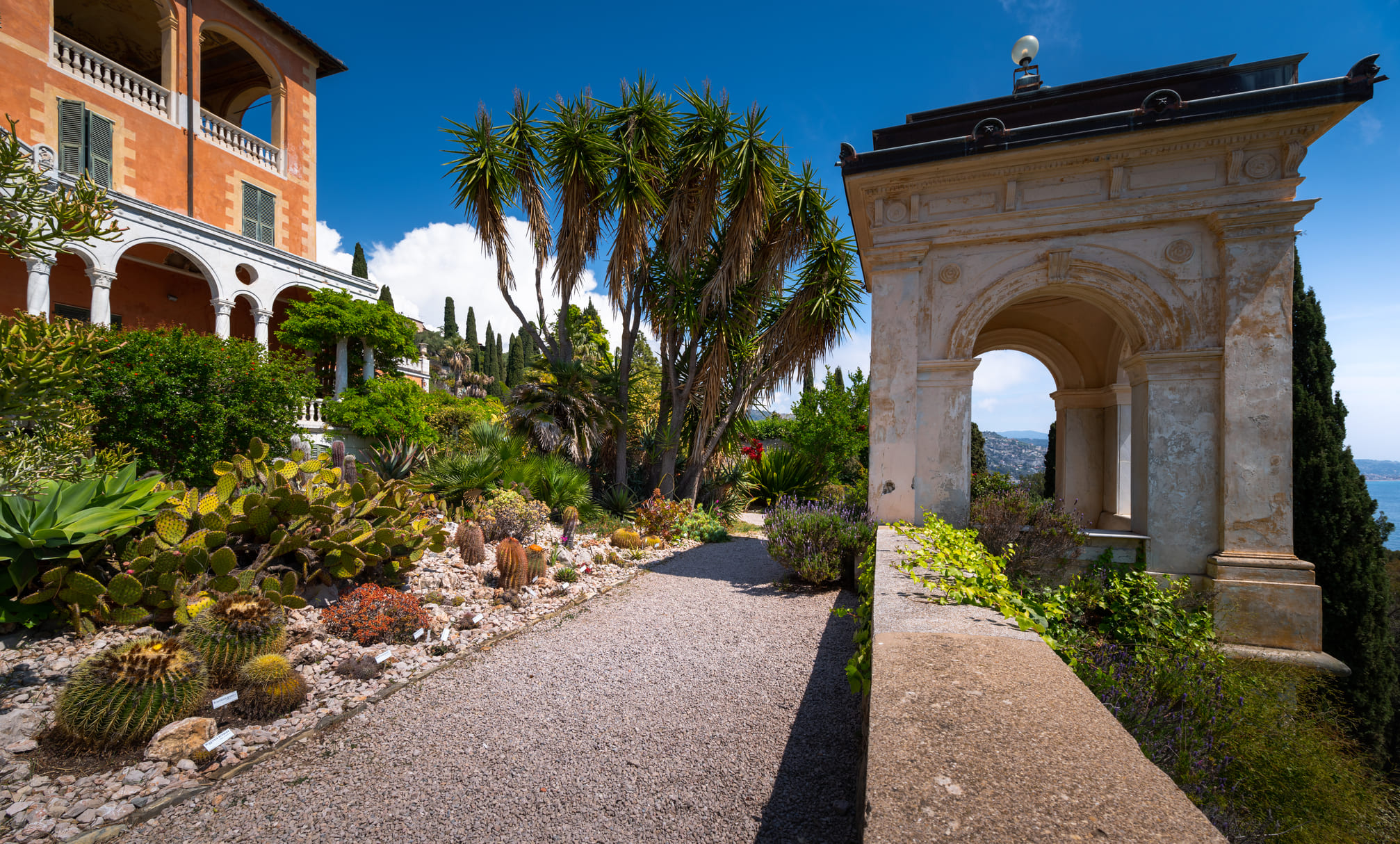Passion and
beauty
A triumph of colors unique in Europe - 5800 species of plants all year round.
A pure wonder overlooking the sea, offering an unexpected spectacle in all seasons. It is the result of the passion for nature of an English family who since 1867 has created a botanical garden with plants from all over the world, making the most of the fortunate position of the area and the particular mildness of its climate.
A perfect combination, with no equal in Europe, both from a botanical point of view – with its 5800 species of ornamental, medicinal, and fruit plants – and from the landscape point of view, in a harmonious triumph of buildings, ornamental elements, and cultivated terraces.
History
After purchasing the Orengo family villa in Mortola, Thomas Hanbury started the project in 1867, with the scientific support of his brother Daniel Hanbury, bringing to life a dream they had cultivated since they were children.
The two brothers made the most of the garden’s position and the diverse exposure to light and winds. Between the sea and the ancient Roman road, in addition to the old olive grove, they established a citrus grove, a vegetable garden, and a rose garden, sheltered from the salt by a renovated boundary walls.
In time, the gardens continued to expand, giving voice to flora from all over Europe and then the world, with the contribution of collections of South African, Australian, and American plants.
The Australian forest was placed on the gentle slope above the Roman road, while other citrus trees found space under the villa.
Even higher up, they decided to keep the olive grove, while – to the west and east – the Mediterranean scrub species were cared for.
In 1907, Thomas died, but at that point, the Hanbury Gardens were already considered an invaluable space, pride and sought-after destination of the area.
Thomas’ son, Cecil, entrusted its care to his wife, Lady Dorothy, who gave impetus to the landscape aspect of the garden, creating view points, avenues, paths, and fountains.
During World War II, the Gardens suffered serious damage and in 1960 Lady Dorothy sold them to the State. Since 1987, they have been entrusted to the management of the University of Genoa and since 2000 they have been a regional protected area.
Information
Corso Montecarlo, 43 – La Mortola 18039 – Ventimiglia (IM)
Opening hours and visiting methods
March 1 to June 15 and September 16 to October 15, 9:30 AM to 5 PM (exit by 6 PM).
June 16 to September 15, 9:30 AM to 6 PM (exit by 7 PM).
October 16 to February 28, 9:30 AM to 4 PM (exit by 5 PM).
Prices
Full single ticket: €10.00
Ticket for schools: €6.00 – min.15 pax
Group ticket (min. 20 pax). €7.50
Discounted single ticket: €8.00 for over 65s, children aged 6 to 14, FAI-T.C.I members, Coop members, Camperlife members
Family ticket: €25.00 – 2 adults + children aged 6 to 14
Audio-video guide rental: €5 – can be used free of charge by blind people thanks to a dedicated application – CURRENTLY NOT AVAILABLE
FREE ENTRY for:
Employees of the University of Genoa, employees of the managing company, family members of the workers employed at the Gardens
Students of the University of Genoa
Children under the age of six, accompanied by parents or other relatives
Journalists registered in the official register of journalists
Members of the Royal Horticultural Society (RHS)
People resident in the Municipality of Ventimiglia (on SUNDAY only)
Fun Fact
The first flowers to become part of the Villa’s gardens were roses from Hanbury’s father’s garden in Clapham Common.

